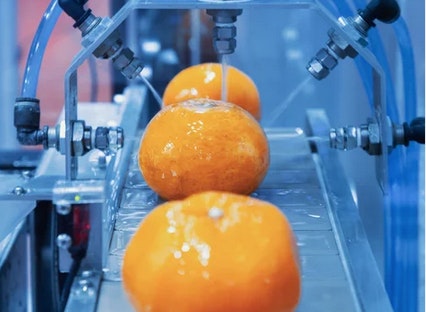Improve Throughput with an Updated Cartoner
If you make, sell, or operate equipment for automatically boxing up product for eventual consumer sales, then odds are pretty good that the product you are handling is either in the food and beverage market or a medical or healthcare product of some sort. It’s not that cartons aren’t used for other things, but the first automated box assembly machine was for the National Biscuit Company (later known as Nabisco) as a way to package up their Uneeda Biscuit product. Not only was it handy for shipping and display on store shelves, but it had plenty of space to extol the wonderful health benefits of the stuff inside the box. This was the beginning of the packaged goods industry and the rest, as they say, is history. Of course cartons have spread to other industries (consumer electronics comes to mind) and the size of the folding carton business in the US has grown to somewhere in the neighborhood of $70-100 billion depending on who you talk to.
END OF LINE OPERATIONS
Digging deeper into the box, or more correctly the carton business; cartoning machines are classified as either horizontal or vertical. That description refers to the orientation of the carton at the time that it is filled. A horizontal machine pushes the contents horizontally through the opening in the side of a fairly flat box – think about a frozen pizza box as an example. Vertical filling might be used for boxes of sugar, in which a certain weight of sugar is dispensed into the box which is open on one end, just before it goes to a sealing operation. Filling and sealing are usually the last steps before the final product is palletized for shipment to the wholesaler.
Generally speaking, the more uniform the final, packaged product, the more amenable it is to automation. Over the years, cartons have become more than just a part of the supply chain. They are a part of the cost of the finished product, a representation of the company brand, an advertisement for the product and a part of the overall value proposition for the consumer.
Since there is value in the cartoning operation and it effects both the manufacturer and the customer in a variety of ways, the step from a manual to an automated cartoning operation must reflect more than just a financial ROI. Usually the initial impetus for automating part or all of the cartoning system is to reduce the cost per piece, or conversely improve the number of pieces per unit of time. However, other reasons can include: improve the yield; offer the product in a variety of package sizes; modernize the control system; or free up personnel to work on higher value tasks. CRG Automation understands the trade-offs associated with designing, installing, and operating a new cartoner. They are also very experienced in retrofits to meet design objectives. Often times one of the big challenges for retrofits is to avoid expanding the footprint too much. All of these issues are probably best illustrated by some real-life examples. To illustrate the challenges that CRG has taken on here are three quick summaries along with links to more detail.
The machine: Horizontal carton
The product: Frozen Pizza
The ask: Change from manual loading at a rate of 75 pizzas per minute to a target of double that. Automate the cartoner, but keep the same footprint.
Results: Pizza output increased to 130 per minute, number of workers needed was cut in half and they were re-deployed to higher value tasks. Controls were updated and stainless steel was added to simplify sanitation procedures. All within budget. For more detail and a video click here.

The machine: Aging cartoner, needing replacement
The product: Food products
The ask: Integrate the new cartoner with upstream and downstream systems. Increase output from 100 cartons per minute to 175. Improve the sanitary aspects of the design without adding stainless steel.
Results: Washdown panels were coated to stand up to washdown. Cabling was installed in the overhead so it would not be impacted by washdown and output targets were achieved. Click here for details.
The machine: Cartoner
The product: Waste bags
The ask: Change product from a folded configuration to a rolled configuration. Cartonize the product in a variety of bag counts from 15 to 50. Complete replacement was not an option as that would be over budget.
Results: CRG worked closely with customer on a custom design at one-half the replacement cost. Doubled speed from 20 to 40 cartons per minute. Reduced changeover time by more than 70%. Reduced overall footprint. Upgraded safety package. For more details check here.
As these examples illustrate there are virtually an infinite number and type of cartonizing situations. The solutions are many and very often geared toward an improved throughput. In each of these examples, although one of the main objectives was an improved throughput, the process uncovered opportunities to improve other parts of the system. The result was that the overall value was increased beyond just the increased throughput: improved washdown, increased variety, freed up resources are just three examples. If you find yourself with a packaging dilemma, contact CRG for an audit of your current system and a chance to see what your process is really capable of.



